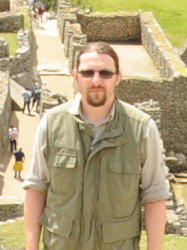BibTex format
@article{Spencer:2012:10.1016/j.revpalbo.2012.09.001,
author = {Spencer, ART and Hilton, J and Sutton, MD},
doi = {10.1016/j.revpalbo.2012.09.001},
journal = {Review of Palaeobotany and Palynology},
title = {Combined methodologies for three-dimensional reconstruction of fossil plants preserved in siderite nodules: Stephanospermum braidwoodensis nov. sp. (Medullosales) from the Mazon Creek lagerstätte},
url = {http://dx.doi.org/10.1016/j.revpalbo.2012.09.001},
year = {2012}
}

